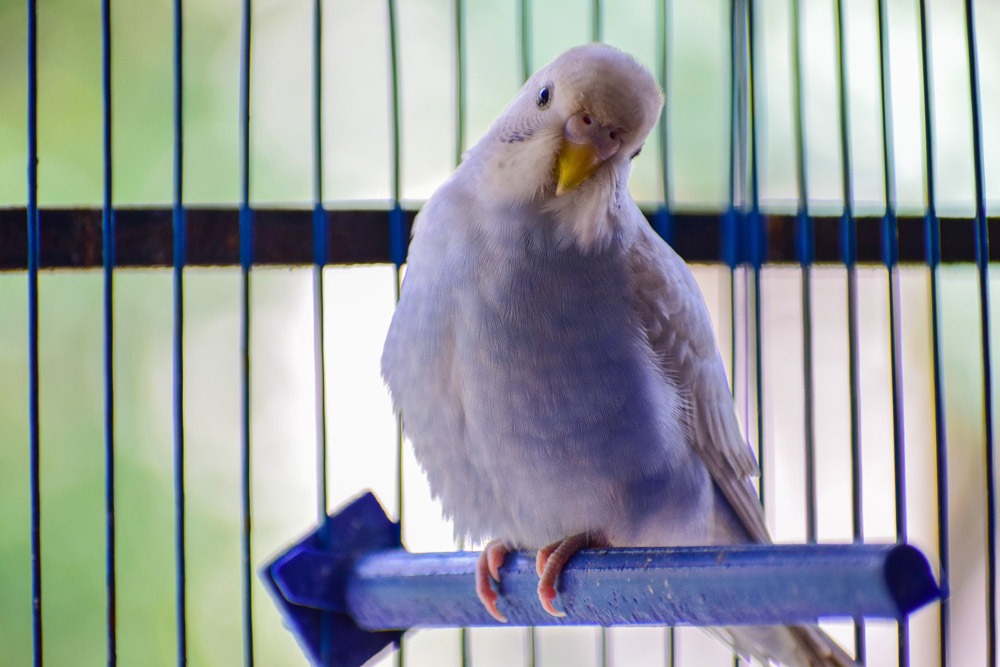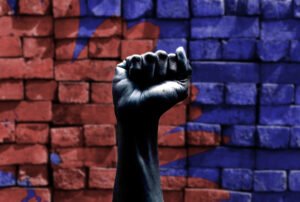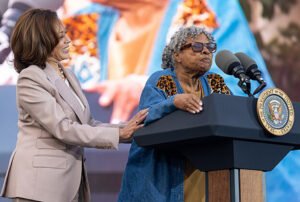
Two decades ago, a bill commonly referred to as the DREAM Act was introduced into the US Senate with both Democratic and Republican supporters. The bill’s initial sponsor was Senator Orrin Hatch (R-UT). The legislation, if passed, promised a path to citizenship for young people brought to the US by their undocumented parents.
Of course, the demand for fair and adequate treatment, including in-state tuition for children and youth, had begun long before 2001. Words such as “dreamer,” “dream act,” and “dreamer status” are often used in this movement, with its complex, rich, and fast-evolving history to demand the protection and recognition of the dignity of all people, not just minors.
Generations have used different advocacy tools to demand that something akin to the Dream Act become law. The Dream Act was first introduced as I started my sophomore year of high school in Wapato, Washington. The feeling of excitement and hope was present among many in our English as a Second Language (ESL) class because we knew someone who could benefit from the bill or we, ourselves, saw access to higher education that could make our high school experience even more worthwhile.
Our ESL instructor, Dr. Dabalos, challenged us to translate our excitement into action. We talked with our respective teachers and asked them to write letters. We shared the letters with Dabalos and, a couple of weeks later, we shared and discussed them with each other. We were genuinely impressed and moved with the content. Dabalos was impressed, too. He subsequently shared the letters with several of our congressional representatives.
When I returned to North Carolina to reunite with my mom and grandmother, I wanted to repeat the same advocacy exercise we did in Washington with my teachers. Ms. Tull, a second-year ESL teacher, wanted to support me. She was excited when I shared that there was a Dream Act bill being considered in Congress. I faced various challenges at that time: I had a below-average English vocabulary, a thick Mexican accent, and about half of my teachers were largely unfamiliar with the bill.
I was empowered to learn more English words, grammar, and cultural references of the late 90s, along with high school traditions. Several teachers had returned to Bulldog Alley to teach; they loved their alma mater.
I fell in love with my high school, too. By the end of the 2001-2002 academic year, I collected several letters from the staff. Mr. Lee, who taught me world history, sent those letters to our federal representatives this time. To this day, he checks in on me from time to time.
A New (Fresh) Wave of Leadership
Fifteen years later, I found myself working in higher education institutions. I met various emerging Latinx leaders who were fighting for access to higher education at the intersection of race, ethnicity, and immigration justice. One of them, Regina, was particularly impressive.
Regina arrived in North Carolina from Veracruz, Mexico at the age of two. A Latina Southern woman, she has been active in the immigrants’ rights justice movement since an early age through the Latino Family Center in her hometown, High Point. Although she has lived in the state since 1998, Regina is constantly reminded that she is in a place where she is not always psychologically or physically comfortable (based on systems, behaviors, and practices).
“I live inside of a cage. I am not free. This is not freedom,” Regina exclaimed. She often refers to her situation as being a DACAmented person, by which she means she’s one of the hundreds of thousands of participants in the Deferred Action for Childhood Arrivals or “DACA” program—a status that remains, even today, a gray zone that provides partial, and often uncertain, protection.
Regina started her advocacy by demanding language access and resources for immigrants and in-state tuition as a young woman; she is an emotionally mature advocate. Many of her teachers and mentors referred to her as capable of achieving anything in life.
Even so, Regina struggled to secure a college degree because North Carolina does not offer in-state tuition for undocumented or DACAmented people; meanwhile private schools do not always have the most accessible financial plans and options for undocumented and DACA recipients. Regina attended a nationally recognized and acclaimed private university in North Carolina. Regina does not need to be an exception to the rule to succeed. While there are many people who may be as intelligent as Regina, they often cannot earn a college degree.
La Malinche: A Revolutionary Mexican Warrior
Regina did well in her college classes. Even so, her participation in extracurricular activities was challenging due sometimes to a lack of understanding and appreciation of her background and related culture. Despite these challenges, she fought for an inclusive and equitable climate and practices through various university-wide committees and specific groups that were focused on creating a safe and welcoming space for undocumented/DACAmented students.
Regina believed that her work and presence in these groups was a way for the university to check the “we have student input” box. She did not believe that she was making adequate progress towards enhancing fair and just practices and procedures for students of color. Through these interactions, however, Regina discovered a passion and talent she never knew she had. This is when La Malinche came about.
Regina’s friend Jenni invited her to join the debate team. Regina enjoyed being part of the team because debate is about “performance and how you effectively deliver your point,” according to Regina.
Both friends decided to research their heritage to find inspiration for their debate competition. Their journey led them to discover La Malinche—an iconic, often misperceived, but influential figure of the Mexican-Spanish Empire of the 1500s. A slave to Spaniards, La Malinche was sold by her mother, who organized a fake funeral in her memory after she sold her child. There is no extensive research and only a few anecdotes about La Malinche, an Indigenous feminist woman of the 1500s. Many perceived her as a traitor because she assimilated to Spanish culture and allegedly turned her back on her own people.
Sign up for our free newsletters
Subscribe to NPQ's newsletters to have our top stories delivered directly to your inbox.
By signing up, you agree to our privacy policy and terms of use, and to receive messages from NPQ and our partners.
Cordelia Candelaria, a transborder and Chicanx studies expert and professor, gives a different perspective about who La Malinche is and what she represents. Although La Malinche was “bred to serve and obey,” according to Candelaria, she quickly stood out from other women who served Hernán Cortés.
La Malinche—a daughter of an Aztec chief born in 1502 in Coatzacoalcos, a pre-Columbian Mexican province—quickly became an interpreter between Spanish people and Indigenous communities. She was named Malintzin at birth and she was later recognized as La Malinche. Because she assisted the Spanish in communicating and navigating indigenous Mexican culture, she became an indispensable translator; at one point, according to Candelaria, “her astute observations led her to uncover an Indigenous conspiracy against Cortés” in Tlaxcala. Many people of her era envied and criticized her due to her closeness with Cortés and other Spaniards.
La Malinche did not received a similar empathetic treatment in history as Montezuma, the Aztec leader whose ineffective leadership contributed to the Spanish conquest of Mexico.[i] Most importantly, La Malinche challenged her time’s cultural, societal, and religious norms to be an indispensable figure and player. She was a connector, a consultant that navigated various cultural and political dilemmas. Notably, she was compelling and persuasive in both worlds.
Regina, a New Malinche
I was intrigued when Regina brought up La Malinche in our conversation. The first three letters of Malinche, “M-A-L” mean “bad” in Spanish. So, I wanted to get her perspective on the Aztec figure. “La Malinche doesn’t conform to purity. She does not fit into the motherly figure, a woman who lives on the farm, raising children. She is very different from La Virgen de Guadalupe (Virgin Mary),” she elaborated.
Regina challenges the norms of being a Latina ‘Southern’ woman living with her DACA status as a college student. She is a dark-skinned young woman with long curly hair, and large circular glasses. She is viewed as “Mexican” by many; however, the more that you get to know her, the more you see a young and powerful woman who navigates within the immigrant, Latinx, and Southern worlds with ease.
“Do you see yourself as La Malinche?” I asked Regina. I never felt the need for someone to say “yes” as I did with her, primarily because the way she described La Malinche is also portrayed by many women in my family. “I do, because La Malinche was rebellious. I don’t admit to my peers and those around me, but I am radical, and La Malinche went against many of society’s rules. She was a hero—she rebelled and came out of that very victorious.”
Currently, Regina is a refugee community organizer. She works with mainstream and local advocates to connect newcomers and more settled communities with service leaders and language access organizations. “The system is often very difficult for these population segments. I want to do something to change it,” Regina concluded.
Moving the Needle—and Movement—Forward
Through these conversations, I learned as much about myself as I did about Regina. She is a force to reckon with—a fierce and influential voice across North Carolina and the South. I saw myself reflected in her. I am thankful she, along with others in her generation, are moving the mainstream conversation away from the “good versus bad immigrant” rhetoric. These attitudes weaken our movement and decrease the likelihood of a comprehensive immigration reform bill from passing.
Regina is deliberate, focused, while still being delicate and joyful. She exemplifies undocu-joy—a thriving feeling and experiences amid the struggles she encounters as an undocumented/DACAmented woman—as she appropriately challenges others in her daily life. She has the power to strongly make her points yet has the patience and understanding to care for the people in her life.
I also see myself reflected in La Malinche because, in part, people like Regina paved the way for new and older generations. La Malinche is assertive, tactful, and can navigate multiple worlds and make them work for her. La Malinche was resourceful and intelligent in navigating two empires. Today, the many memories of her inspire Regina and her fellow young leaders to become their own historical giants.
Regina graduated from college in May 2020. She majored in sociology with a concentration in immigration and a minor in communications. She and her friend Jenni placed first in a national debate competition among 50 schools.
Regina is today’s Malinche. In fact, she was born 45 minutes away from Coatzacoalcos, Veracruz, the birthplace of La Malinche.
Like her hero, Regina navigates both known and unknown worlds and is not afraid to advocate for herself and others. She knows that her leadership is needed and that her generation, mostly generation Z and younger, is changing our ways of seeing, and our expectations of justice.
The new Malinche represents a victory for her people and justice for those that have experienced oppression. Are you ready to join us?
[i] William H. Prescott, Mexico and the Life of the Conqueror Fernando Cortes (New York: Peter F. Collier, 1842).













